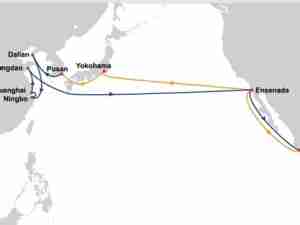ArcelorMittal’s Lesson for China? Less Steel Is More: Gadfly
By: David Fickling | Feb 08 2016 at 10:30 PM | Maritime
What’s the core business of a big steel company? It’s not making sheet metal, wire and rods—it’s buying factories and then closing them down. That’s the lesson from ArcelorMittal’s results last week. The $4.8 billion in writedowns taken in the fourth quarter brings asset impairments over the past decade to $11.4 billion—more than every cent of net income it’s earned in that time: ArcelorMittal’s bloodletting hasn’t been pleasant for investors. Its shares have lost 64 percent of their value over the last year alone.
Compared with their peak in June 2008, they’re down 95 percent, cutting deep into the fortune of founder Lakshmi Mittal, whose family holds a 37 percent stake. Capitalism has always thrived on creative destruction, but ArcelorMittal seems to be seeing more of the latter than the former. Between 2009 and 2014, it closed 25 finished-steel plants and cut production capacity by more than 16 million tons a year. The world’s biggest steel company is shrinking to survive. What reasons would there be for emulating that? More than you’d think. Improving or shedding under-performing businesses should be basic housekeeping for any executive.
And on that metric, ArcelorMittal stands above its peers. While it’s been buffeted by the waves of oversupply that have flooded through the global steel industry, it’s worked to put its own house in order by closing unprofitable plants. That’s meant it’s the only big-five steelmaker, along with Nippon Steel & Sumitomo, to return a (slender) economic profit to investors in any quarter since 2010: The driving force behind all this pain is China, whose steel sector has grown far bigger than demand for its products would merit.
It’s using about a third more steel per head than other large manufacturing economies. Some 20 percent of the country’s plants need to close to bring supply back in line with demand, according to the country’s second-biggest producer Baosteel. China’s steel exports of 112 million metric tons last year exceeded the total output of Japan, the world’s second-biggest producing country.
Authorities in Beijing have tried to address this overcapacity, pushing the country’s biggest steelmakers to follow the Mittal template of buying and then closing weaker rivals. But it’s not working. The market share of China’s top 10 crude steel producers actually dropped from 49 percent in 2010 to 37 percent in 2014, according to Bloomberg Intelligence’s Yi Zhu — well short of the 60 percent-by-2015 target set out in the country’s 12th Five-Year Plan. The 124 takeover deals carried out in the country’s steel sector over the Plan period were matched by a 28 percent increase in annual production to 804 million tons last year.
Output growth only started turning negative last year: With luck, those declines will accelerate to staunch the losses—but don’t hold your breath. China’s new consolidation target is for the top 10 producers to have that same 60 percent market share by 2025, meaning the country is a decade away from having what would still be a highly fragmented industry. Until that overcapacity plays itself out, less will be more in global steel.
This column does not necessarily reflect the opinion of Bloomberg LP and its owners.







